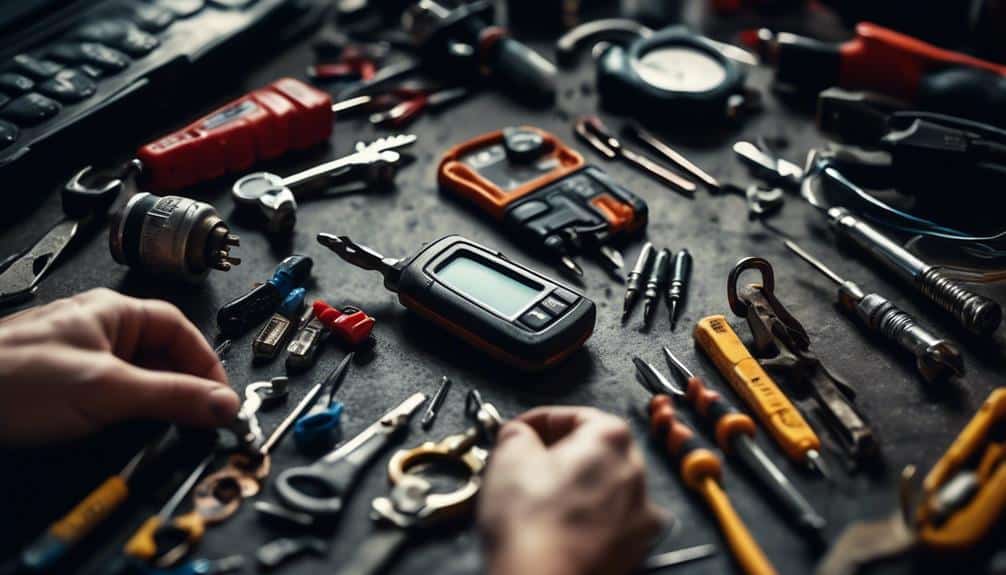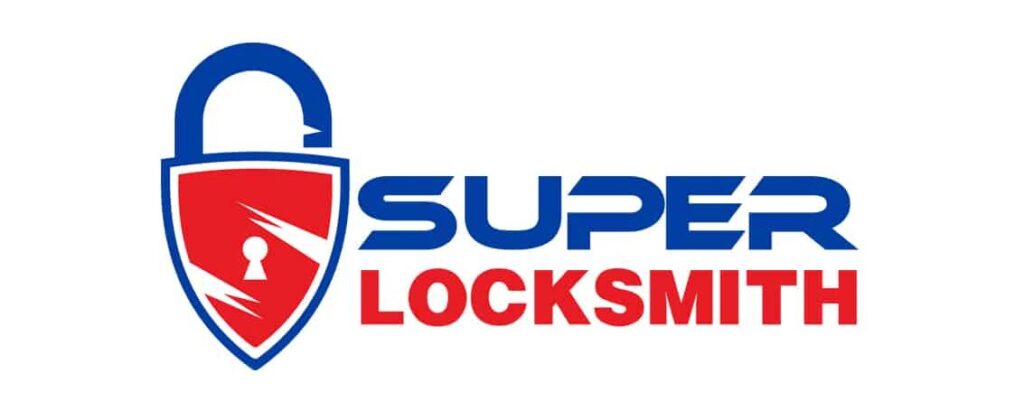When it comes to modern car technology, keyless ignition systems have become the norm, offering convenience and ease of use. However, like any technology, these systems can sometimes encounter issues that leave us feeling frustrated and stranded.
But fear not, for in this step-by-step guide, we will navigate the intricate world of keyless ignition system repairs.
From troubleshooting to programming a new key fob, we've got you covered. So, if you've ever found yourself locked out of your car or dealing with a malfunctioning keyless ignition system, stay tuned for the ultimate guide to fixing it.
Understanding Keyless Ignition Systems
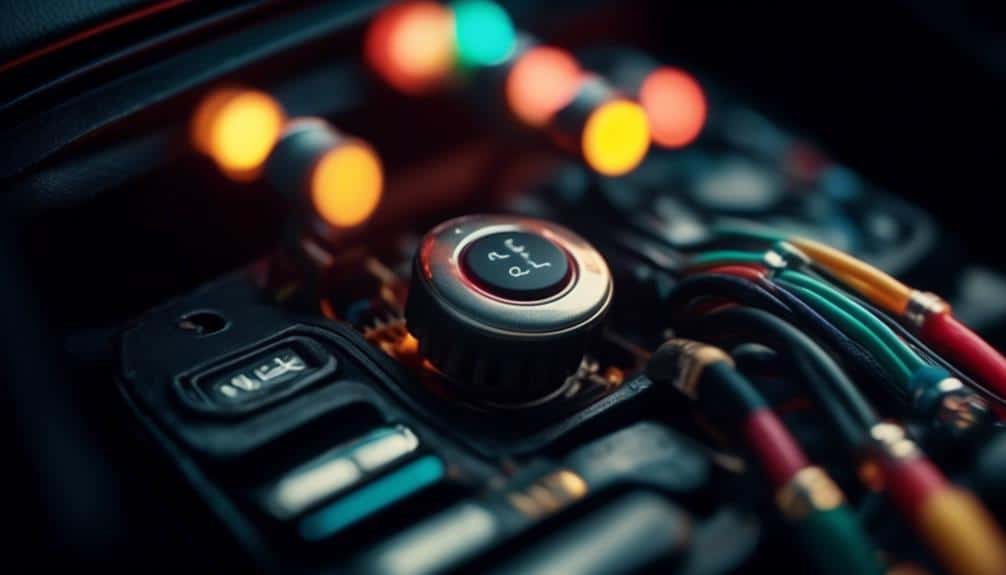
Understanding keyless ignition systems is essential for troubleshooting and fixing any issues that may arise. Keyless ignition systems, also known as push-button start systems, have become increasingly popular in modern vehicles due to their convenience and advanced technology. These systems offer several benefits over traditional key-based ignition systems.
One of the key benefits of a keyless ignition system is the ease of use. With a simple push of a button, the engine can be started or turned off. This eliminates the need for physical keys and allows for a more streamlined and seamless driving experience.
Another advantage is the enhanced security features. Keyless ignition systems often incorporate advanced encryption technology, making it more difficult for thieves to steal the vehicle. Additionally, some systems include features such as proximity sensors that automatically lock the doors when the key fob is out of range.
However, it's important to take certain safety precautions when using a keyless ignition system. Since there's no physical key, it's crucial to keep the key fob in a safe and secure location to prevent unauthorized access. It's also advisable to regularly check the battery life of the key fob and replace it if necessary to avoid any potential issues.
Common Issues With Keyless Ignition Systems
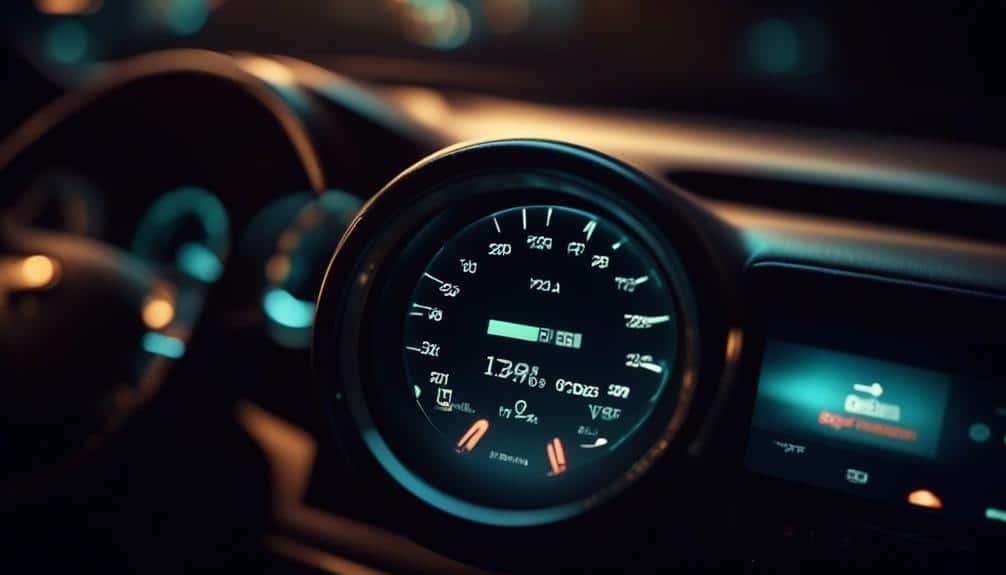
When it comes to keyless ignition systems, troubleshooting common malfunctions is essential for effective repairs. By understanding the error code meanings, we can pinpoint the root cause of the issue and take appropriate action.
Additionally, resetting the system can often resolve minor glitches and restore functionality.
Troubleshooting Common Malfunctions
To effectively troubleshoot common malfunctions with keyless ignition systems, it's crucial to identify potential issues and their corresponding solutions. Here are four common issues with keyless ignition systems and their possible causes and prevention measures:
- Key Fob Not Detected: This issue may occur due to a weak or dead battery in the key fob. To prevent this, regularly replace the battery or keep a spare one on hand.
- Engine Not Starting: A faulty ignition switch or a disrupted connection between the key fob and the vehicle can lead to this problem. Regularly clean the key fob's contacts and ensure a secure connection to prevent it.
- Intermittent Starting Problems: This issue may arise from a faulty keyless entry receiver or a weak signal. Keep the key fob within range and avoid interference from other electronic devices.
- Key Fob Battery Drain: Leaving the key fob too close to the vehicle or a malfunctioning keyless entry receiver can drain the battery. Store the key fob away from the vehicle and periodically test its battery life.
Understanding Error Code Meanings
One of the most crucial aspects of troubleshooting common issues with keyless ignition systems is deciphering the meanings of error codes.
Error codes are numerical or alphanumeric codes that are generated by the system to indicate specific problems or malfunctions. These codes provide valuable information that helps in diagnosing common issues and identifying the root cause of the problem.
It's important to understand the error code interpretation in order to effectively resolve the problem. Each error code corresponds to a specific issue, such as a faulty sensor, a communication error, or a malfunctioning component.
Resetting the System
After understanding the error code meanings, the next step in troubleshooting common issues with keyless ignition systems is to reset the system. Resetting the system can help resolve various problems and restore the functionality of the keyless ignition. Here are four troubleshooting techniques to reset the system:
- Disconnect the battery: Start by disconnecting the negative terminal of the battery for a few minutes. This will reset the system and clear any temporary faults.
- Use the key fob: Press and hold the lock and unlock buttons on the key fob simultaneously for about ten seconds. This will reset the system and reestablish communication between the key fob and the vehicle.
- Check the manual: Consult the vehicle's manual for specific instructions on how to reset the keyless ignition system. Different car models may have different reset procedures.
- Seek professional assistance: If the above techniques don't work or if you're unsure about performing the reset yourself, it's recommended to seek help from a professional technician who specializes in keyless ignition systems.
Tools Needed for Keyless Ignition System Repair
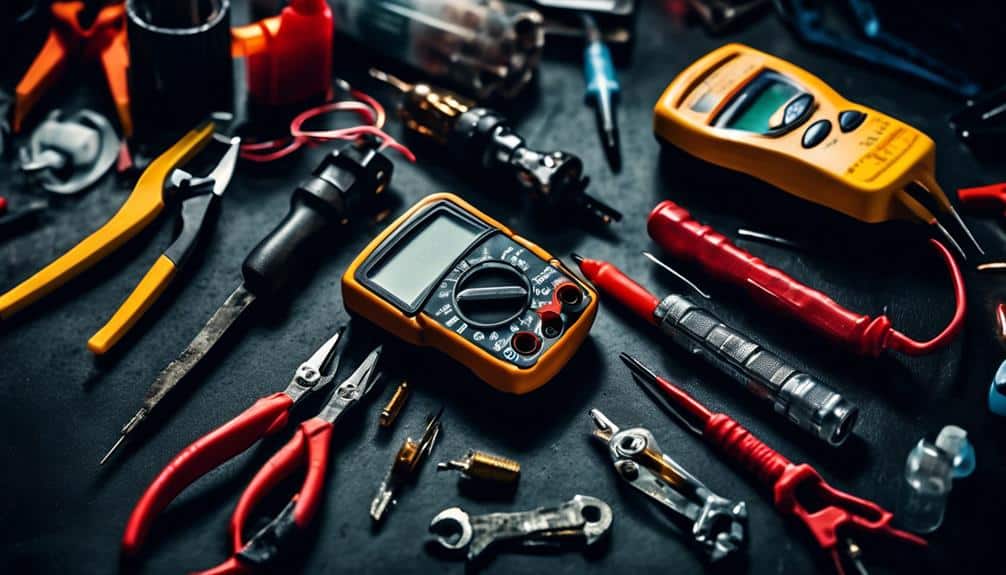
We require a set of specialized tools to effectively repair keyless ignition systems. Two essential tools for keyless ignition system repair are a battery testing tool and a set of troubleshooting techniques.
Firstly, a battery testing tool is necessary to determine if the battery in the key fob is functioning properly. This tool allows us to measure the voltage of the battery and check if it's within the acceptable range. If the battery is low, it can cause issues with the keyless ignition system, such as difficulty in starting the vehicle or intermittent functionality. By using the battery testing tool, we can quickly identify if the battery needs to be replaced.
Secondly, a set of troubleshooting techniques is crucial for diagnosing and resolving issues with the keyless ignition system. These techniques involve systematically checking various components of the system, such as the key fob, the receiver module, and the ignition switch. By following a step-by-step approach, we can pinpoint the root cause of the problem and apply the appropriate repair solution.
Step 1: Troubleshooting the Keyless Ignition System
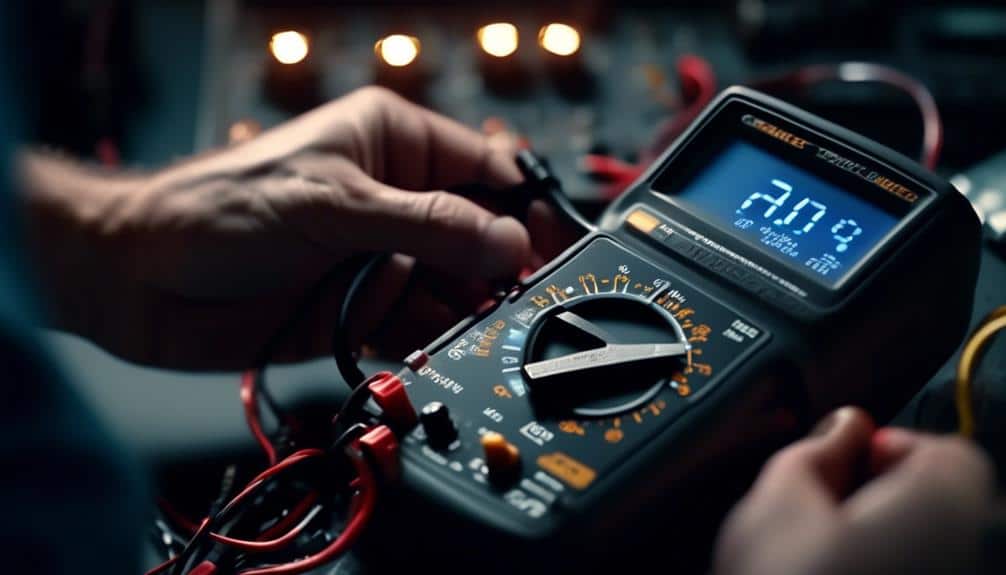
To begin troubleshooting the keyless ignition system, we can start by examining the key fob for any visible signs of damage or malfunction. The key fob is a small device that allows you to start your car without inserting a key into the ignition.
Here are some troubleshooting techniques we can use to identify and resolve common issues with the keyless ignition system:
- Check the battery: A weak or dead battery in the key fob can prevent it from communicating with the car's ignition system. Replace the battery if necessary and ensure it's properly installed.
- Reset the system: Sometimes, the keyless ignition system can experience glitches. To reset it, remove the key fob from the ignition, wait a few minutes, and then reinsert it. This can often resolve minor issues.
- Inspect the key fob buttons: Make sure the buttons on the key fob aren't stuck or damaged. Press each button firmly to ensure they're working properly. If any buttons are unresponsive, the key fob may need to be replaced.
- Check for error messages: Some keyless ignition systems display error messages on the dashboard. Take note of any error messages and consult the vehicle's manual or contact a professional for further assistance.
Step 2: Replacing the Keyless Ignition System Battery
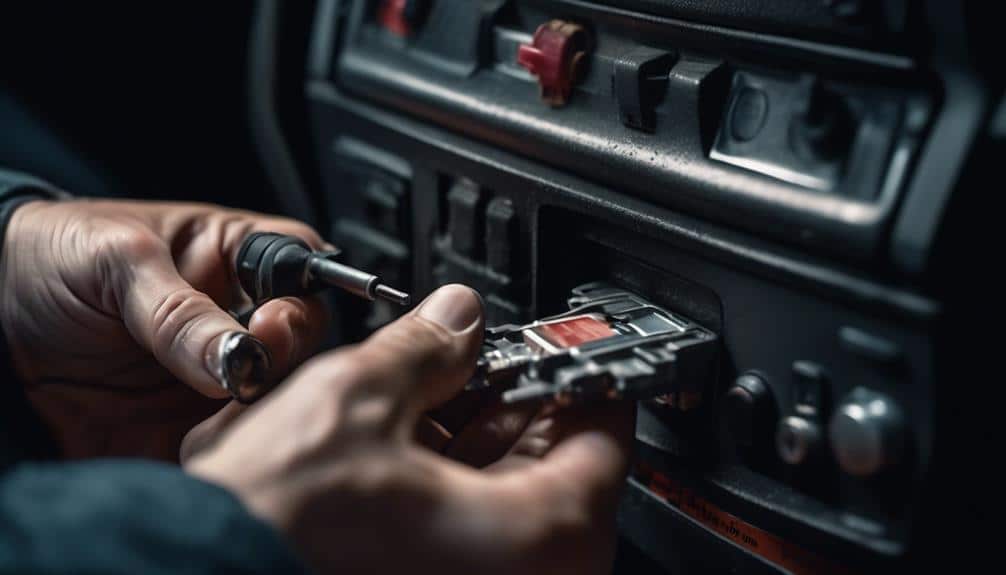
Now that we've identified the issue with the keyless ignition system and determined that the battery needs to be replaced, let's discuss the process of replacing the battery.
First, we need to ensure that we choose the right battery for our specific keyless ignition system model.
Once we've the correct battery, we can proceed with testing the new battery to ensure it's functioning properly before installing it in the system.
Battery Replacement Process
After removing the battery cover, carefully disconnect the old keyless ignition system battery from its terminal.
To ensure a smooth battery replacement process, it's essential to follow these steps:
- Choose the right battery: Check your vehicle's user manual or consult with a professional to determine the correct battery type and specifications for your keyless ignition system. Using the wrong battery can lead to malfunctioning or damage.
- Safety precautions: Before handling the new battery, make sure to wear protective gloves and eyewear. This will protect you from any potential battery acid leaks or other hazards.
- Positioning the new battery: Place the new battery in the correct orientation, aligning the positive and negative terminals with the corresponding connectors in the keyless ignition system. Ensure a secure fit to prevent any loose connections.
- Reconnecting the battery: Carefully attach the connectors to the new battery's terminals, ensuring a tight and secure connection. Double-check that the battery is properly secured in place before closing the battery cover.
Choosing the Right Battery
Having followed the necessary safety precautions, we can now proceed to selecting the appropriate battery for the keyless ignition system. When choosing a battery, it is crucial to consider factors such as battery life and maintenance requirements. Opting for a high-quality battery with a long lifespan will help ensure reliable performance for your keyless ignition system. Additionally, proper battery maintenance is essential to prolong its lifespan and prevent any potential issues. Regularly checking the battery's voltage, cleaning the terminals, and avoiding overcharging or deep discharging can significantly extend its longevity. To highlight these points, we have included a table below:
| Factors to Consider |
|---|
| Battery Life |
| Battery Maintenance |
| Quality |
| Voltage |
Testing the New Battery
To ensure proper functionality, the new battery for the keyless ignition system must be tested for optimal performance. Battery testing is an essential step in troubleshooting techniques to identify if the issue lies with the battery or elsewhere in the system.
Here are four important steps to follow when testing the new battery:
- Measure the voltage: Use a multimeter to measure the voltage of the new battery. A healthy battery should read around 12.6 volts. Anything significantly lower could indicate a weak battery that needs to be replaced.
- Load test the battery: Apply a load to the battery to determine its ability to sustain power. A load tester can simulate the demands of the keyless ignition system and check if the battery can handle them adequately.
- Check for voltage drop: While the battery is under load, monitor the voltage drop. Excessive voltage drop suggests a weak battery or a faulty electrical connection.
- Inspect the battery terminals: Ensure the battery terminals are clean and securely attached. Loose or corroded terminals can cause poor electrical contact and affect the battery's performance.
Following these battery testing steps will help identify any issues and ensure the keyless ignition system operates smoothly.
Step 3: Resetting the Keyless Ignition System
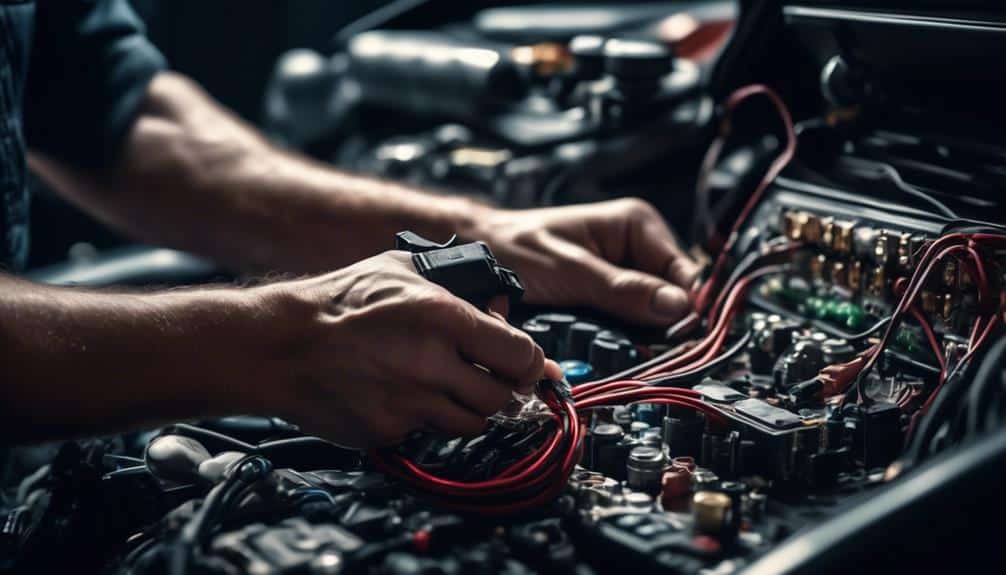
To reset the keyless ignition system, we'll need to follow a series of precise steps to ensure technical accuracy. Resetting the system is necessary when there are issues with the keyless ignition system, such as a malfunctioning key fob or a dead battery.
It's important to note that each car manufacturer may have slightly different resetting procedures, so it's crucial to consult the owner's manual for the specific steps for your vehicle.
One common mistake when resetting the keyless ignition system isn't properly synchronizing the key fob with the car's computer. This can result in the keyless ignition system not recognizing the key fob, preventing the car from starting.
To avoid this, start by entering the car and closing all doors. Insert the key fob into the ignition and turn it to the 'On' position. Wait for approximately 10 seconds, or until the security light on the dashboard stops flashing. Turn the key fob back to the 'Off' position and remove it from the ignition.
Step 4: Programming a New Key Fob
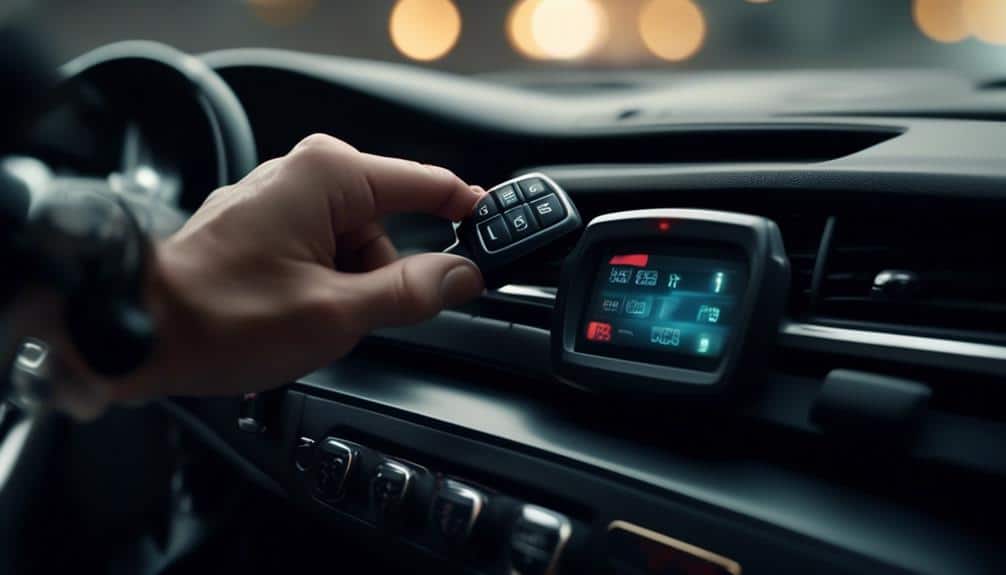
We will now proceed to program a new key fob in a technical and precise manner. Programming a new key fob is an essential step in fixing keyless ignition systems. Key fob compatibility issues can arise when trying to program a new fob, so it's important to follow the correct procedure. Here are four steps to successfully program a new key fob:
- Locate the programming instructions:
Consult the vehicle's owner manual or contact the manufacturer to obtain the specific programming instructions for your make and model. Each vehicle may have a slightly different process, so it's crucial to have the correct instructions.
- Enter programming mode:
Follow the instructions provided to enter the programming mode. This may involve a combination of key turns and button presses. Pay close attention to the sequence and timing required for successful entry into programming mode.
- Program the new key fob:
Once in programming mode, use the existing key fob or ignition switch to initiate the programming process. This typically involves pressing a series of buttons or switches in a specific order. Again, adhere to the instructions provided for your particular vehicle.
- Test the new key fob:
After programming the new key fob, test its functionality by locking and unlocking the vehicle. Ensure that all buttons on the fob work as intended and that it successfully starts the ignition.
Step 5: Testing the Repaired Keyless Ignition System

Moving on to Step 5, we'll now proceed with the crucial task of thoroughly testing the functionality of the repaired keyless ignition system. Testing the system ensures that all the repairs made in the previous steps were successful and that the keyless ignition system is functioning as intended.
To begin the testing procedures, we'll first check the basic functionalities of the system, such as the ability to start the engine, lock and unlock the doors, and open the trunk. We'll also test the key fob's ability to communicate with the vehicle by checking if it can remotely start the engine and control other functions.
If any issues arise during the testing process, troubleshooting techniques should be employed to identify the root cause of the problem. This may involve checking the connections between the keyless ignition system components, ensuring that they're properly secured and functioning. Additionally, the vehicle's battery should be inspected to ensure it has enough power to support the keyless ignition system. If necessary, the battery should be replaced or charged.
Frequently Asked Questions
How Long Does It Take to Troubleshoot a Keyless Ignition System?
When it comes to troubleshooting a keyless ignition system, the time it takes can vary depending on the issue at hand. On average, it can take anywhere from 30 minutes to a couple of hours to diagnose and fix the problem.
However, it's important to note that regular keyless ignition maintenance can help prevent these issues from occurring in the first place. By following the proper maintenance procedures, you can minimize the time spent troubleshooting and keep your keyless ignition system running smoothly.
Can I Replace the Keyless Ignition System Battery Myself, or Do I Need to Take It to a Professional?
When it comes to replacing the battery in a keyless ignition system, it's possible to do it yourself or seek professional assistance. However, the choice depends on various factors such as your technical skills and comfort level.
If you have experience and knowledge in handling electronic components, you may feel confident in performing the replacement yourself.
However, if you're unsure or unfamiliar with the process, it's advisable to consult a professional to avoid any potential issues or further damage.
Is It Possible to Reset the Keyless Ignition System Without a Key Fob?
Yes, it's possible to reset the keyless ignition system without a key fob. There are alternative methods available that can be used to reset the system.
These methods may vary depending on the make and model of your vehicle. It's important to consult the vehicle's owner manual or contact the manufacturer for specific instructions on how to reset the keyless ignition system without a key fob.
How Much Does It Cost to Program a New Key Fob for a Keyless Ignition System?
Programming a new key fob for a keyless ignition system can vary in cost depending on several factors. The cost can range from around $50 to $200, depending on the make and model of your vehicle, as well as where you choose to have it programmed.
When programming a new key fob, it's important to ensure that it's done correctly to avoid any issues or malfunctions with your keyless ignition system.
It's recommended to consult with a professional technician for precise and accurate programming.
What Should I Do if the Keyless Ignition System Still Doesn't Work After Following All the Steps in the Guide?
If the keyless ignition system still doesn't work after following all the steps in the guide, there are alternative solutions to consider.
Common problems that may cause the system to fail include a dead key fob battery, a faulty ignition switch, or a malfunctioning receiver in the vehicle.
In such cases, it's recommended to check the battery, replace the key fob, or consult a professional technician for further diagnosis and repair.

